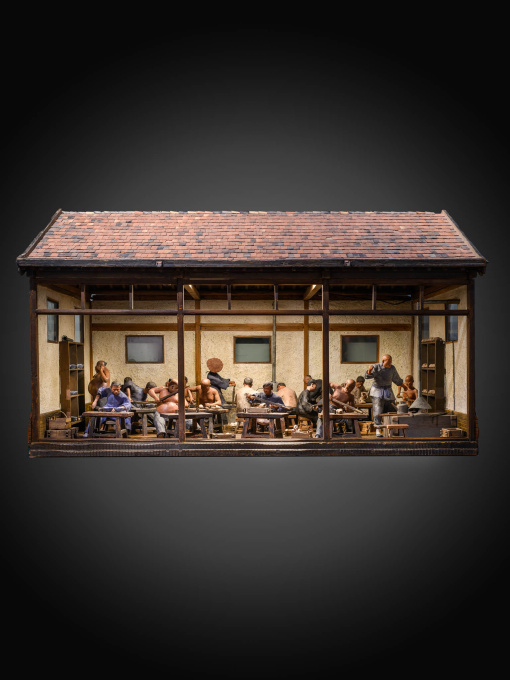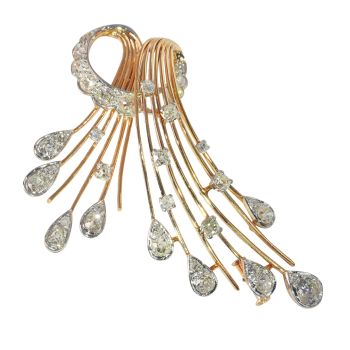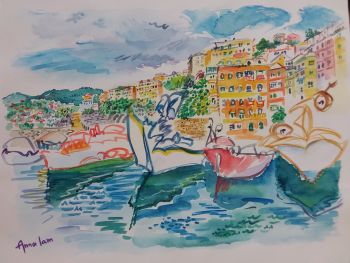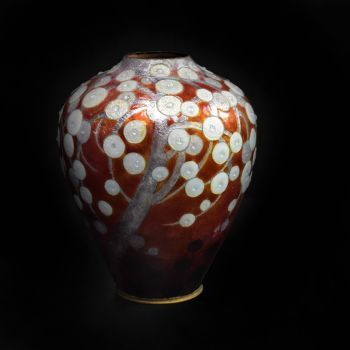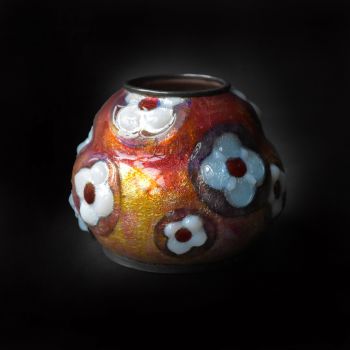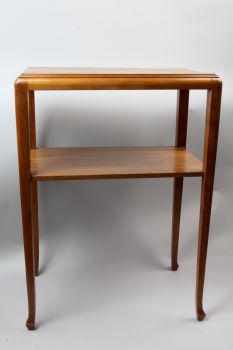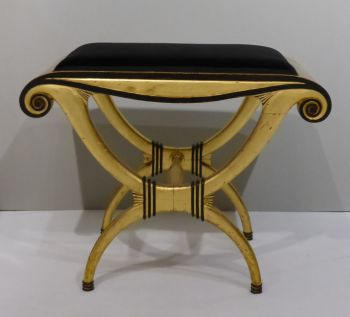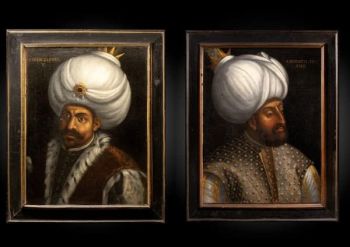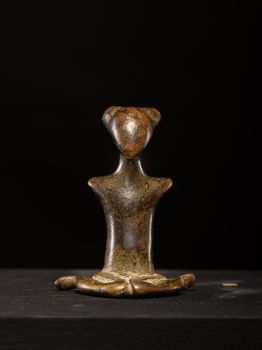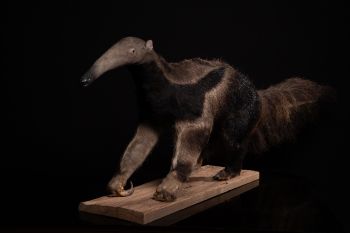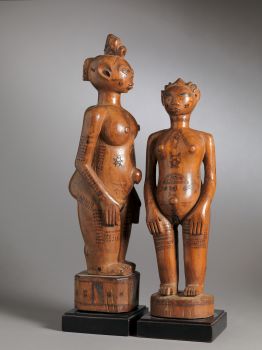19th C SCALED MODEL OF A CHINESE WORKSHOP WITH 17 POLYCHROMES TERRACOTTA FIGURES 1880 - 1900
Artiste Inconnu
80 ⨯ 129 ⨯ 81 cm
ConditionVery good
Prix sur demande
Spectandum Gallery
- Sur l'oeuvre d'artThis diorama of an artisanal workshop groups 17 Chinese polychromed-decorated nodding head figures dated from the 19th C. Thirteen have nodding heads and are portraits of individuals, and some served as generalized representations of their trade class and occupation. Terracotta figures became popular as objects of curiosity that communicated the costumes and customs of Chinese culture. These figures were usually constructed by moulding clay and were then allowed to air dry and covered in a fine paper. Gesso was applied and the figures were decorated with a water-based gouache. Since these objects were not glazed nor fired in a kiln and are therefore more fragile, they experienced greater wear over time. Although the specific manufacturers and dates of such figures are comparatively rarely recorded, a documented pair of more elaborated nodding-head figures dating to 1803 'copied from the life and brought from Canton’, are in the collection at the Peabody Museum in Salem, Massachusetts (C.L. Crossman, The China Trade, Woodbridge, Suffolk, 1991, p.317, col.pl. 112). Similarly, a group of nodding-head figures were sold from the collection of David Style, Esq., Christie's house sale, Wateringbury Place, Maidstone, Kent, 31 May-2 June 1978, lots 200-204.This diorama was made for an international European exhibition; most probably “Kina I Tivoli” in the Tivoli gardens in Kopenhagen-Denmark 1902.We acquired them from a Danish private collection
- Sur l'artiste
Il peut arriver qu'un artiste ou un créateur soit inconnu.
Certaines œuvres ne doivent pas être déterminées par qui elles sont faites ou elles sont faites par (un groupe d') artisans. Les exemples sont des statues de l'Antiquité, des meubles, des miroirs ou des signatures qui ne sont pas claires ou lisibles, mais aussi certaines œuvres ne sont pas signées du tout.
Vous pouvez également trouver la description suivante :
•"Attribué à …." A leur avis probablement une oeuvre de l'artiste, au moins en partie
•« Atelier de …. ou « Atelier de » À leur avis, une œuvre exécutée dans l'atelier ou l'atelier de l'artiste, éventuellement sous sa direction
•« Cercle de… ». A leur avis une oeuvre de la période de l'artiste témoignant de son influence, étroitement associée à l'artiste mais pas forcément son élève
•« Style de … ». ou "Suiveur de ...." Selon eux, une œuvre exécutée dans le style de l'artiste mais pas nécessairement par un élève ; peut être contemporain ou presque contemporain
•« Manière de… ». A leur avis une oeuvre dans le style de l'artiste mais d'une date plus tardive
•"Après …." A leur avis une copie (quelle qu'en soit la date) d'une oeuvre de l'artiste
•« Signé… », « Daté… ». ou « Inscrit » À leur avis, l'œuvre a été signée/datée/inscrite par l'artiste. L'ajout d'un point d'interrogation indique un élément de doute
• "Avec signature ….", "Avec date ….", "Avec inscription …." ou "Porte signature/date/inscription" à leur avis la signature/date/inscription a été ajoutée par quelqu'un d'autre que l'artiste
Êtes-vous intéressé par l'achat de cette oeuvre?
Artwork details
Related artworks
Artiste Inconnu
Series of 6 Chinese cups and saucers (Yongzheng period)1722 - 1735
Prix sur demandeKuipers Kunst & Antiek
1 - 4 / 12Børge Mogensen
Teak wood “dropleaf” desk – Søborg Møbler, Denmark circa 19551950 - 1960
Prix sur demandeVan Kerkhoff Art
Artiste Inconnu
Japanese transition-style lacquer coffer 1640 - 1650
Prix sur demandeZebregs & Röell - Fine Art - Antiques
 Sélectionné par
Sélectionné parDanny Bree
Artiste Inconnu
UN MODÈLE JAPONAIS D'UN NORIMONO, UN PALANQUIN1650 - 1700
Prix sur demandeZebregs & Röell - Fine Art - Antiques
1 - 4 / 24Artiste Inconnu
Pair of 19th C French Taxidermy Dioramas1860 - 1890
Prix sur demandeSpectandum Gallery
Artiste Inconnu
Couple Wooden Ancestors Sculptures with Scarifications, Zela People, DRC. 1920 - 1930
Prix sur demandeSpectandum Gallery
Artiste Inconnu
MATERNITY FIGURE, FANG-MABEA, CAMEROON.PROVENANCE R.CAILLOIS-P.RATTON.1920 - 1930
Prix sur demandeSpectandum Gallery
1 - 4 / 12

